Perennial vegetables are crops that you plant just once and they come back for you to harvest year after year. These types of crops are relatively rare in North American gardens.
With the exception of asparagus, rhubarb and artichokes, most gardeners are probably unaware of the tasty, extremely low-maintenance bounty that can be harvested at times when many annual crops aren’t available.
- A Brief History of Perennial Crops
- Benefits of Perennial Vegetables
- Drawbacks of Perennial Vegetables
- Perennials Grown As Annuals
- Cultivating Perennial Vegetables
- Perennials in Permaculture Systems
- 20 Perennial Vegetables for North American Gardens
- 1. Berry Bushes
- 2. Asparagus
- 3. Rhubarb
- 4. Artichokes
- Get Asparagus, Rhubarb & Artichokes at MIGardener
- 5. Kale and Collards (usually grown as annuals)
- 6. Garlic (usually grown as an annual)
- Find Hardneck Garlic Sets at MIGardener!
- 7. Radicchio (usually grown as an annual)
- 8. Horseradish
- Find Horseradish Rootstock at MIGardener
- 9. Lovage
- 10. Watercress
- 10 (More) Perennial Vegetables You Might Not Know
- Resources
A Brief History of Perennial Crops
According to Perennial Vegetables by Eric Toensmeier, most North American gardening and farming traditions come from Europe, where there are very few native perennial crops except fruits and nuts.
Cold and temperate Eurasian agriculture centered around livestock, annual grains and legumes, and early European settlers to North America simply brought their seeds and their cultivation methods with them, including draft animals for plowing up the soil every year.
However, in more temperate and tropical areas of the world, including much of North and South America, perennial crops were actively bred, selected and cultivated. These perennial crops were favored perhaps because they require less work to grow, and lacking large domesticated draft animals, only hand tools were needed to farm them.
Now that we know about them, it would be a shame to ignore these useful and productive foods any longer. Perennial vegetables make a valuable addition to any food garden, especially because, compared to annual crops, they tend to be
- more nutritious,
- easier to grow,
- more ecologically beneficial,
- and less dependent on water and other inputs.
Benefits of Perennial Vegetables
Perennial Vegetables are Low Maintenance
Imagine growing vegetables that require just about the same amount of care as perennial flowers and shrubs—no annual tilling and planting. They thrive and produce abundant and nutritious crops throughout the season. Once established in the proper site and climate, perennial vegetables can be very hardy, despite neglect. Established perennials are often more resistant to pests, diseases, drought and weeds, too.
In fact, some perennials are so good at taking care of themselves that they require frequent harvesting to prevent them from becoming weeds themselves! The ease of cultivation and high yield is arguably the best reason for growing them.
Perennial Vegetables Extend the Harvest
Perennial vegetables often have different seasons of availability from annuals, which provides more food throughout the year. While you are transplanting tiny annual seedlings into your vegetable garden or waiting out the mid-summer heat, many perennials are already growing strong or ready to harvest.
Perennial Vegetables Can Perform Multiple Garden Functions
Many perennial vegetables are also beautiful, ornamental plants that can enhance your landscape. Others can function as hedges, groundcovers or erosion control for slopes. Yet other perennial vegetables provide fertilizer to themselves and their neighboring plants by fixing nitrogen in the soil. And some provide habitat for beneficial insects and pollinators, while others can climb trellises and provide shade for other crops.
There is a perennial crop for almost every garden condition!
Perennial Vegetables Help Build Soil
Because they don’t need to be tilled, perennial plants help foster a healthy and intact soil food web, including providing habitat for a huge number of animals, fungi and other important soil life.
When well mulched, perennial plants improve the soil’s structure, organic matter, porosity and water-holding capacity.
Perennial vegetable gardens build soil the way nature intended by allowing the plants to naturally add more and more organic matter to the soil through the slow and steady decomposition of their leaves and roots into the ground beneath them. As they mature, perennials also help build topsoil and sequester atmospheric carbon.
Drawbacks of Perennial Vegetables
There are some important things to consider before planting perennials:
- Some perennial vegetables are slow to establish and may take several years to grow before they begin to yield well. (Asparagus and serviceberry are good examples of this.)
- Like many annuals, some perennial greens become bitter once they flower, therefore they are only available very early in the season, when it is cool.
- Some perennials have strong flavors which many Americans are unaccustomed to.
- Some perennials are so low-maintenance that they can quickly become weeds and overtake your garden, or escape and naturalize in your neighborhood. (Daylilies are a good example of this.)
- Perennials vegetables need to be careful placed into a permanent place in your garden, with room to grow in the years to come. They will also have to be maintained somewhat differently from your annual crops.
- Perennials have special pest and disease challenges because you can’t use crop rotation to minimize problems. Once some perennials catch a disease, they often have it forever, and need to be replaced.
Perennials Grown As Annuals
Some perennial crops are grown as annuals because they are easier to care for that way. For example, potatoes are technically perennials, but we grow them as annuals because pest and disease pressure in North America requires us to rotate potatoes often.
On the other hand, some plants we grow as annuals do quite well as perennials, like kale, which will get leggy, but over-winter quite well with a little protection.
Cultivating Perennial Vegetables
One way to incorporate perennial veggies into your garden is to expand the edges of an already established garden. Simply extend an existing garden bed by 3 or 4 feet and plant a border of perennials there.
Or, if you already grow a perennial ornamental border or shrub garden, consider integrating some attractive perennial vegetables, such as sea kale or sorrel. Many have attractive leaves or flowers to enhance the landscape.
You can also take advantage of currently unused areas of your landscape, matching the conditions to the appropriate perennial. There are some perennials, like ramps, that will grow in shady, wet or cool conditions where you couldn’t ordinarily grow food!
Perennials in Permaculture Systems
If you’re already growing perennial vegetables and want to take your garden or homestead to the next level, consider Permaculture gardening.
By imitating nature’s ecosystems, this approach to gardening and landscape design promotes greater partnerships between plants, soil, insects and wildlife.
In Permaculture designs, annual and perennial vegetables, herbs, fruiting shrubs and vines grow as an understory to taller fruit and nut trees. This technique is sometimes called “layering” or building a “guild.”
Layers or Guilds need to be built over a couple of years.
- In the first year, plant fruit trees as outposts around your property, giving them a wide radius from any other trees.
- Sheet mulch a 2- to 3-foot-radius around each fruit tree the first year and gradually increase the radius of the mulched area as the trees grow. This prepares the ground around the trees for the understory plantings to come.
- In the second year, you can begin planting the mulched area with perennial vegetables, fruiting shrubs and vines. (For more on this method, see Gaia’s Garden: A Guide to Home-Scale Permaculture.)
20 Perennial Vegetables for North American Gardens
There are many perennials crops that are known and loved by gardeners everywhere, including these ten common ones:
1. Berry Bushes
Most of the tasty berries that we are familiar with buying at the store grow easily in most parts of North America and Europe. Blueberries make a lovely addition in the edible or ornamental landscape, and thorny raspberries and blackberries make a great “living fence.”
Strawberries take more care than most other berries, but a well cultivated patch will deliver strawberry delight for years to come.
Other berries, like serviceberries, gooseberries, and currants, also make lovely, productive additions to the landscape.
Berries have widely varying cultivation needs, so research each type of berry you plant, but nearly all grow well in zones 3–8.

2. Asparagus
An early spring delicacy loved by many, once you get an asparagus patch going (which takes a couple of years), it can deliver a bounty of tender spears to your dinner table every spring for decades to come. Zones 3–8.
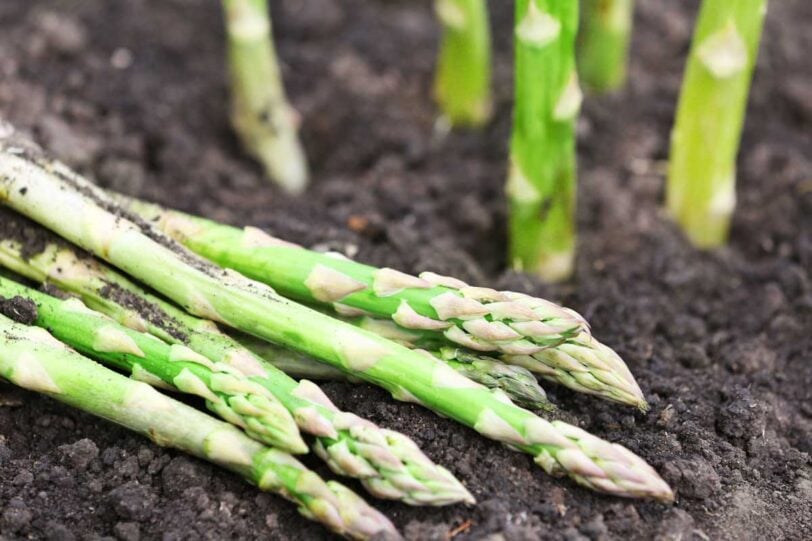
3. Rhubarb
For those who love rhubarb crisp or strawberry-rhubarb pie, a single, mature rhubarb plant can deliver enough rhubarb to make dessert for an entire block party every year!
Grown for its tasty stalks (the leaves are toxic), with enough space in the garden and a little mulch for winter protection, rhubarb typically delivers bounties of tasty stalks year after year. Zones 3–8.

4. Artichokes
Distantly related to thistles, artichokes prefer mild winters where they will grow as tender perennials. Give them lots of room to grow, plenty of sun, and well-drained soil and they will yield tasty harvests for up to 5 years.
Artichokes are hardy as a perennial in zones 7–11, but can be grown as an annual in zones 5–6.
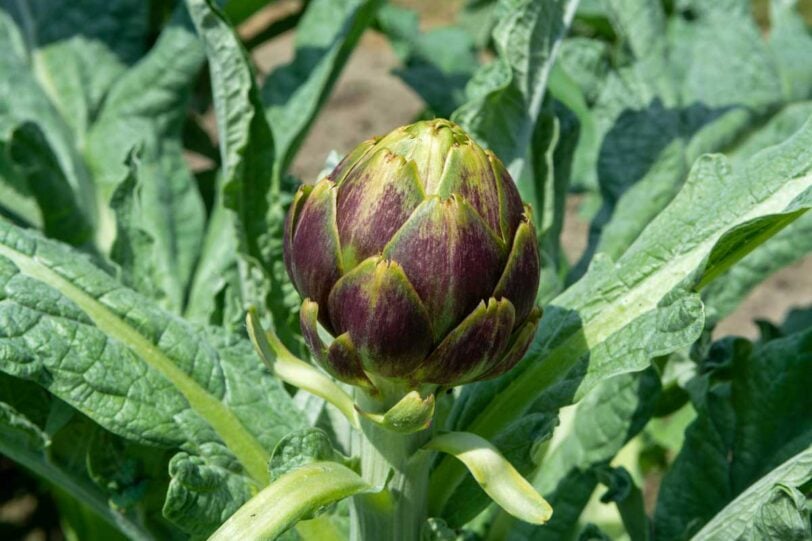
5. Kale and Collards (usually grown as annuals)
Kale and collard greens are usually grown as annual plants, but in areas with milder winters, kale, and to a lesser extent collards, will easily produce all winter. They eventually grow into leggy tree-like plants that looks like they’re from a Dr. Seuss book, but kale and collards will keep producing tasty leaves for a year or two if you let them.
Kale and collards will produce all winter in zones 7–10, but in zones 4–6, they will overwinter with protection and get a headstart growing in the spring.

6. Garlic (usually grown as an annual)
Garlic is typically planted in the fall and harvested the following year, which provides many big heads to cure all at once. But if you just left some of your garlic bulbs in the ground, they would continue to grow and produce side cloves and (bulbets from the scapes) indefinitely.
Growing garlic as a perennial means year-round harvests and never needing to buy seed garlic again. You can even tuck garlic cloves around your ornamental plants and grow it perennially as a pest control. The scapes are quite lovely and interesting in the landscape. Zones 4–9.

7. Radicchio (usually grown as an annual)
Radicchio (“Italian chicory”) will come back every year in most North American climates, as long as you don’t dig it up for blanching. It prefers cooler weather, and like many salad greens, grows more bitter as temperatures climb. Radicchio grows in zones 4–10, but needs some protection to overwinter in freezing winters.
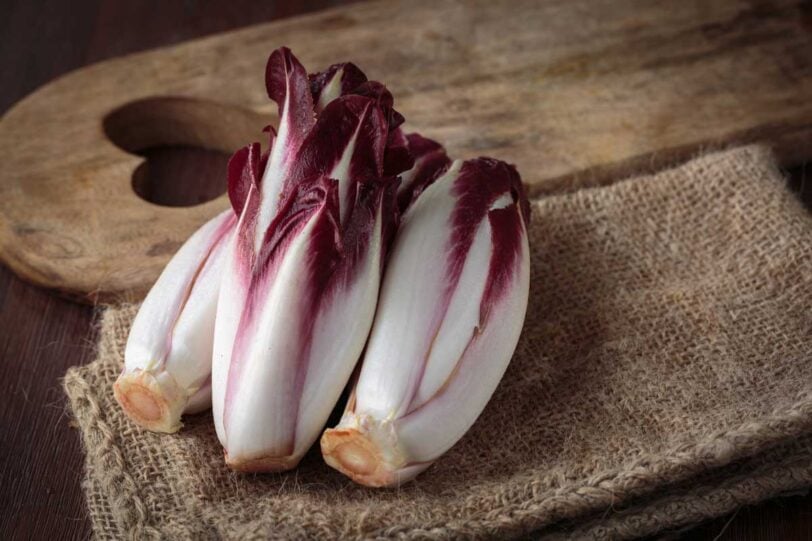
8. Horseradish
As long as you harvest just the side roots that develop after a year or two of growth, the main horseradish taproot will continue to produce a new harvest year after year. Horseradish is so pungent, one plant is usually enough for many households. Hardy in zones 3–9, but grows best in areas where there is a hard winter freeze.

9. Lovage
Lovage is an easy-to-grow relative of celery, and you can use the leaves, root and seeds like you would use celery leaves, roots and seeds in the kitchen. Lovage grows well in most climates and soil conditions, needs little maintenance, and suffers few problems. Zones 3–9.
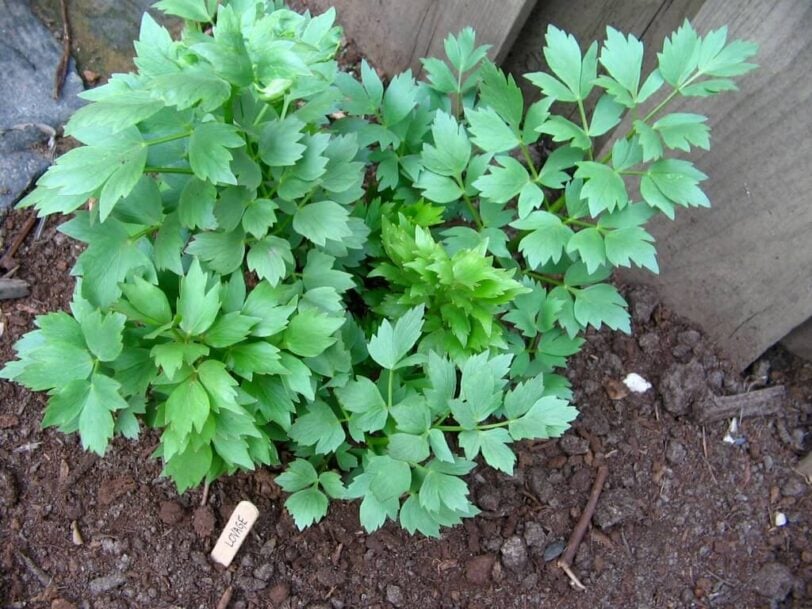
10. Watercress
Watercress is a sun and water loving perennial that grows naturally along streambanks and other running waterways. This spicy, nutritious salad green can be planted in wet spots or next to a pond or water feature in your landscape. Watercress grows in zones 3–11, but really prefers cooler climates.
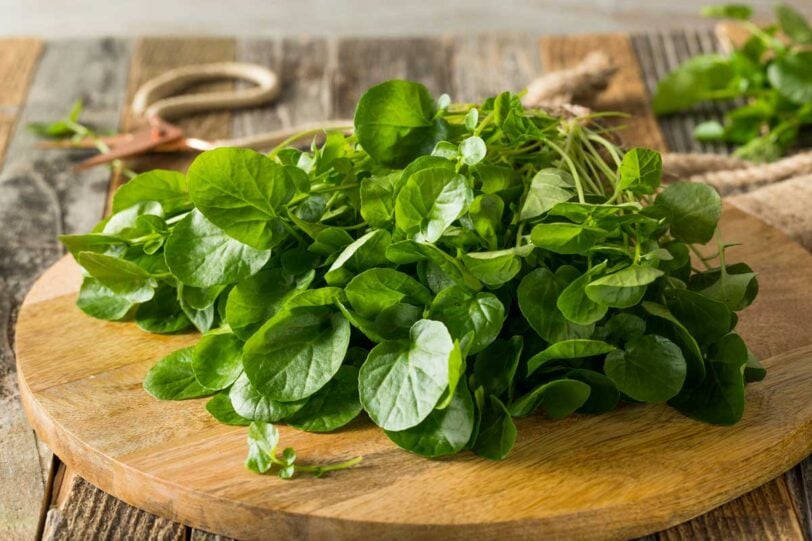
These ten perennial crops are relatively common, but there are actually hundreds of perennial fruits and vegetables that will grow in temperate and warm climates like those found in North America!

Perennial Vegetables by Eric Toensmeier is the undisputed bible on the subject of edible perennials. With hundreds of full-color pages covering over 100 perennial crops that you can grow at home, you will be amazed and inspired to try something new in your garden every Spring!
For each plant, this gorgeous reference includes:
- range maps,
- color photos,
- climate and historical information,
- complete instructions for how to raise, tend and harvest, and
- recipes and cooking ideas.
Perennial vegetables make the perfect complement to annuals in the food garden, and this book will show you lots of ways to incorporate them into both your landscape and your pantry.
10 (More) Perennial Vegetables You Might Not Know
Here are ten delicious, easy-to-grow perennial vegetables you may not know about yet. I’ve selected these from among dozens of perennial vegetables described in Perennial Vegetables for taste, ease of cultivation and cooking, and broadest climate range.
Some of the following perennials grow wild in many parts of North America already, but because they are over-harvested or they grow in fragile landscapes, it is usually better and more reliable to cultivate your own patch at home. That way you can also plant special cultivars of these wild edibles, carefully selected for taste and adapted for home garden conditions. (See nursery list in Resources, below.)
No gardener or homesteader serious about growing their own food should be without some of these perennials in their landscape!
11. Bunching or Egyptian Onions
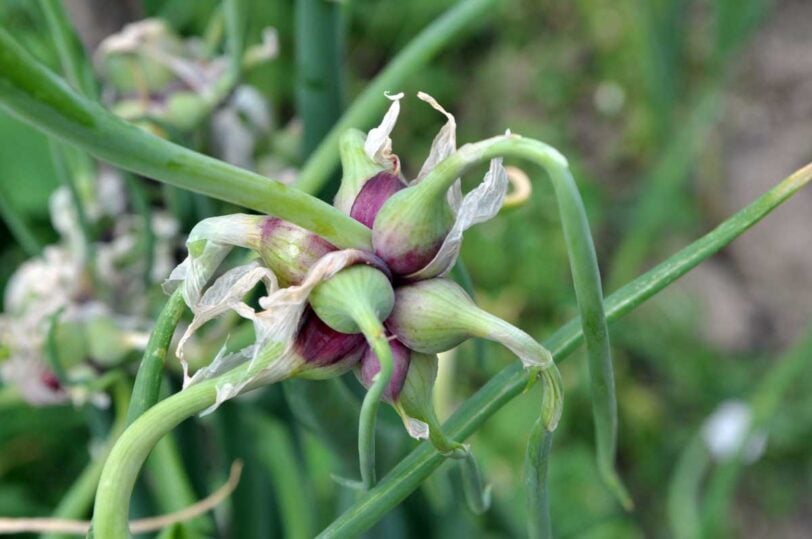
Some types of onions, such as the fall-planted bunching and Egyptian Walking onions, continue to produce new onions even after some are harvested.
The Egyptian Walking onion (Allium cepa var. viviparum) produces small bulbils at the top of its stalk in late summer. These bulbils get heavy and lay on the soil to set down roots, creating new plants—which is how they get the name “walking onions.” You can use these tiny onions as they are, or plant them in the fall to grow more Egyptian Walking onions. Zones 4-8.
12. Daylilies
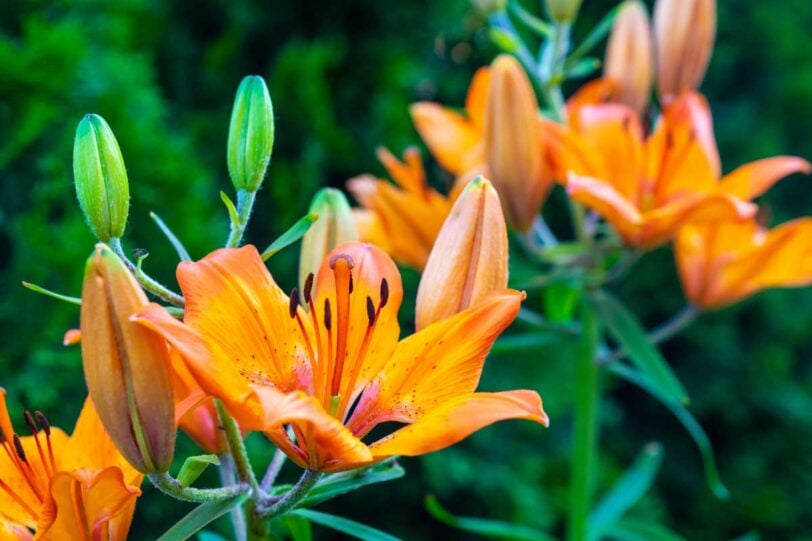
As any gardener will tell you, daylilies (Hemerocallis spp.) thrive on neglect. So much so, they have naturalized across the United States. While they are primarily grown as ornamentals in North America, they are grown as a vegetable in Asia, harvested for their daily profusion of flower buds, which are used like green beans. The flowers themselves are served in salads or battered and fried. Zones 2-10.
13. Good King Henry

Good King Henry (Chenopodium bonus-henricus) is a traditional European vegetable known for its tasty shoots, leaves and flower buds. This spinach relative grows in full sun or partial shade and moist, well-drained soil. Harvest the tender shoots in spring. Zones 3–9.
14. Groundnut
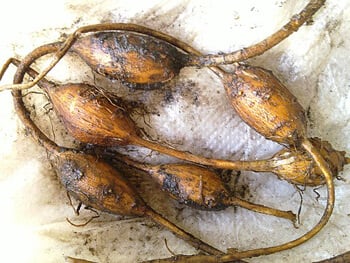
Native to eastern North America, groundnut or “Potato Bean” (Apios americana), is a nitrogen-fixing, 6-foot vine that bears lovely flowers, edible beans, and high-protein tubers that taste like nutty potatoes.
Grow groundnut vines near a shrub or trellis (as support) in a moist site that receives full sun or partial shade. Harvest in fall. Zones 3–9.
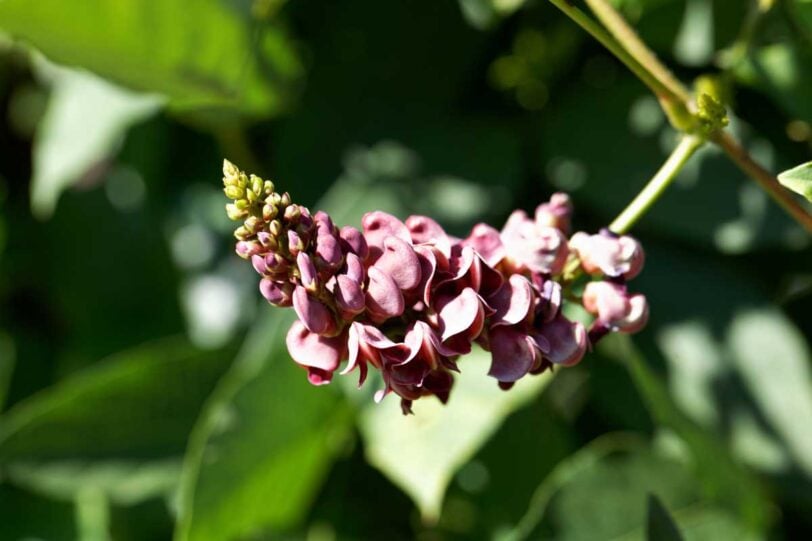
15. Jerusalem Artichoke
In the same family as sunflowers, Jerusalem artichokes (Helianthus tuberosus, also called “sunchokes”) are grown for their underground tubers. You can peel and eat them raw. or cook them like potatoes. Their tall, charming yellow flowers attract beneficial insects to the garden.
Jerusalem artichokes are vigorous plants that spread by underground rhizomes and may become difficult to eradicate if you don’t contain them well from the beginning. Some gardeners consider them invasive. Zones 4-9.

16. Ostrich Fern
Many gardeners grow ostrich ferns (Matteuccia struthiopteris) for their ornamental value, not realizing that they can also be grown for their delicious, early Spring fiddleheads, which are a coveted delicacy among foodies and fine-dining restaurants nationwide.
Ostrich fern fiddleheads taste like a mixture of asparagus, green beans, and broccoli. They love cool, shady spots and are very hardy from zones 3–7.
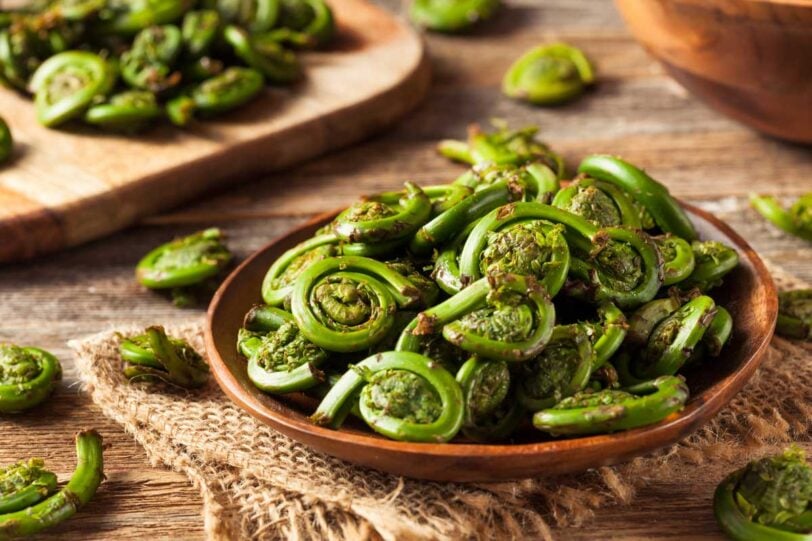
17. Ramps or Wild Leeks
Ramps or wild leeks are an onion relative (Allium tricoccum) that grows wild in deciduous forests east of the Mississippi, emerging every Spring. They are a local delicacy that many people forage from the wild, and because of that are becoming threatened.
How much easier and more sustainable to simply grow your own? Leaves and bulbs of ramps are both edible, but it will take a few years to establish a good patch. Grow in a shady border in moist loam, or naturalize beneath trees. Zones 3–7.
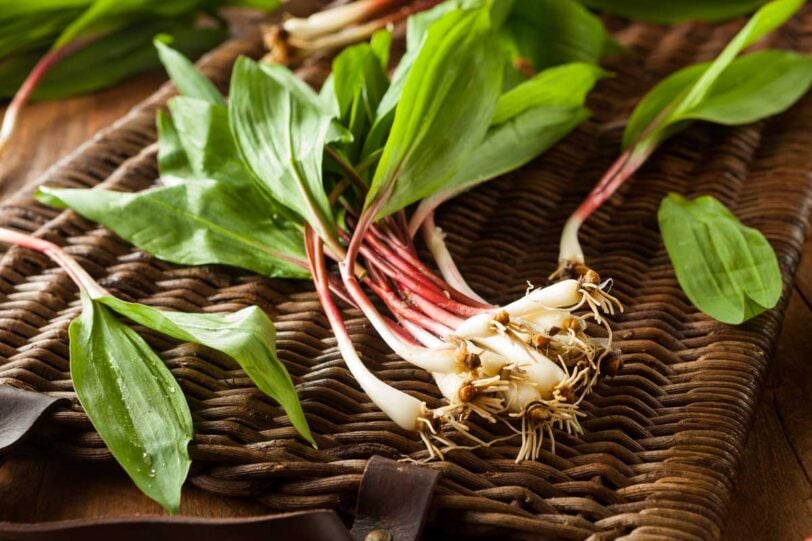
18. Scarlet Runner Beans
Scarlet runner beans (Phaseolus coccineus) are usually grown as ornamentals in most people’s gardens, but they are quite edible and nutritious, both as green beans and, later, as dried beans. The flowers, young leaves and tubers are also edible when cooked.
Some Scarlet Runner beans plants have been known to live 20 or more years, practically taking over a garden! Perennial in zones 6–11.

19. Sea Kale
Sea Kale (Crambe maritime) is sometimes grown as an ornamental for its gray-blue leaves and white flowers on 3-foot-tall plants. The shoots, young leaves and flowers are edible, too. It grows and tastes just like regular kale, but has a more bushy habit in the garden. Zones 4–8.
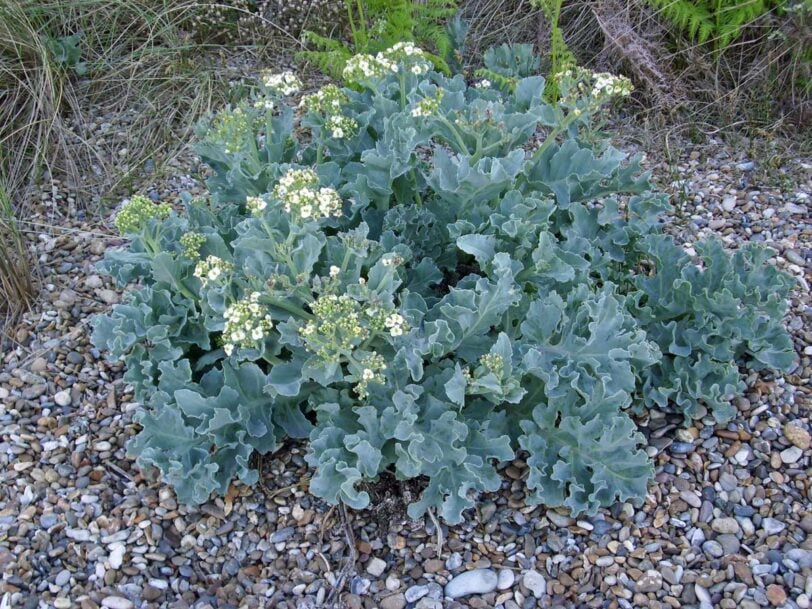
20. Sorrel
Sorrel is a perennial herb with tart, lemon-flavored leaves used for soups, stews, salads, and sauces. The two main sorrels grown are common sorrel, Rumex acetosa, and French sorrel, Rumex scutatus.
Sorrel is a relative of rhubarb, and the leaves contain small amounts of oxalic acid that’s not harmful when consumed in small quantities, (unless you are sensitive to oxalates).
Sorrel tastes best in early spring; it becomes bitter as the weather warms. It’s a delicacy that is hard to find in markets because it wilts quickly after harvest. Garden sorrel is perennial down to Zone 5; French sorrel is perennial to Zone 6. With mulching, sorrel will overwinter in colder climates.
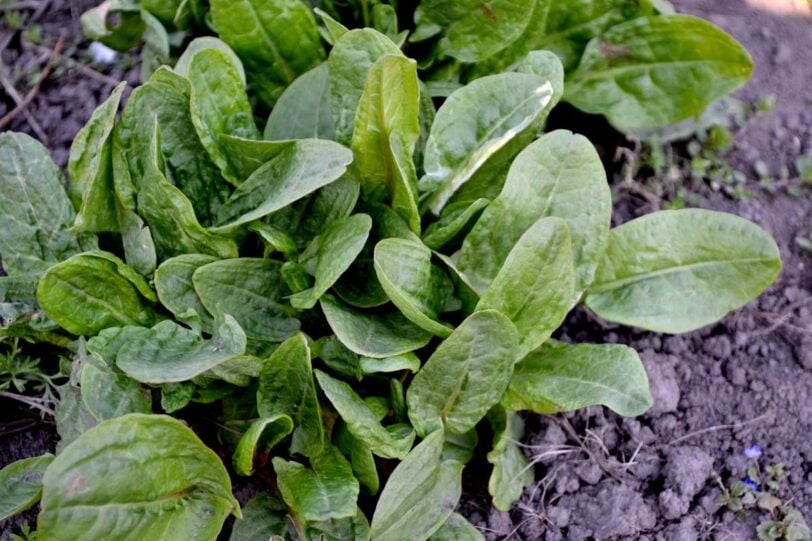
Resources
Perennial seeds and plants can be hard to find, depending on where you live. Here are some resources to get you started.
Nurseries
- MIGardener – An amazing resource for low-cost plants and seeds
- Plants for a Future International Nursery List
- Edible Landscaping – Afton, VA
- Oikos Tree Crops – Kalamazoo, MI
- Permaculture Nursery – Food Forest Farm; Holyoke, MA
- Forest Farm – Williams, OR
Books
- Perennial Vegetables by Eric Toensmeier
- Gaia’s Garden: A Guide to Home-Scale Permaculture by Toby Hemenway
Online Reference
What perennial vegetables do you grow? Let us know in the comments!
Photo credit: Deposit Photos








